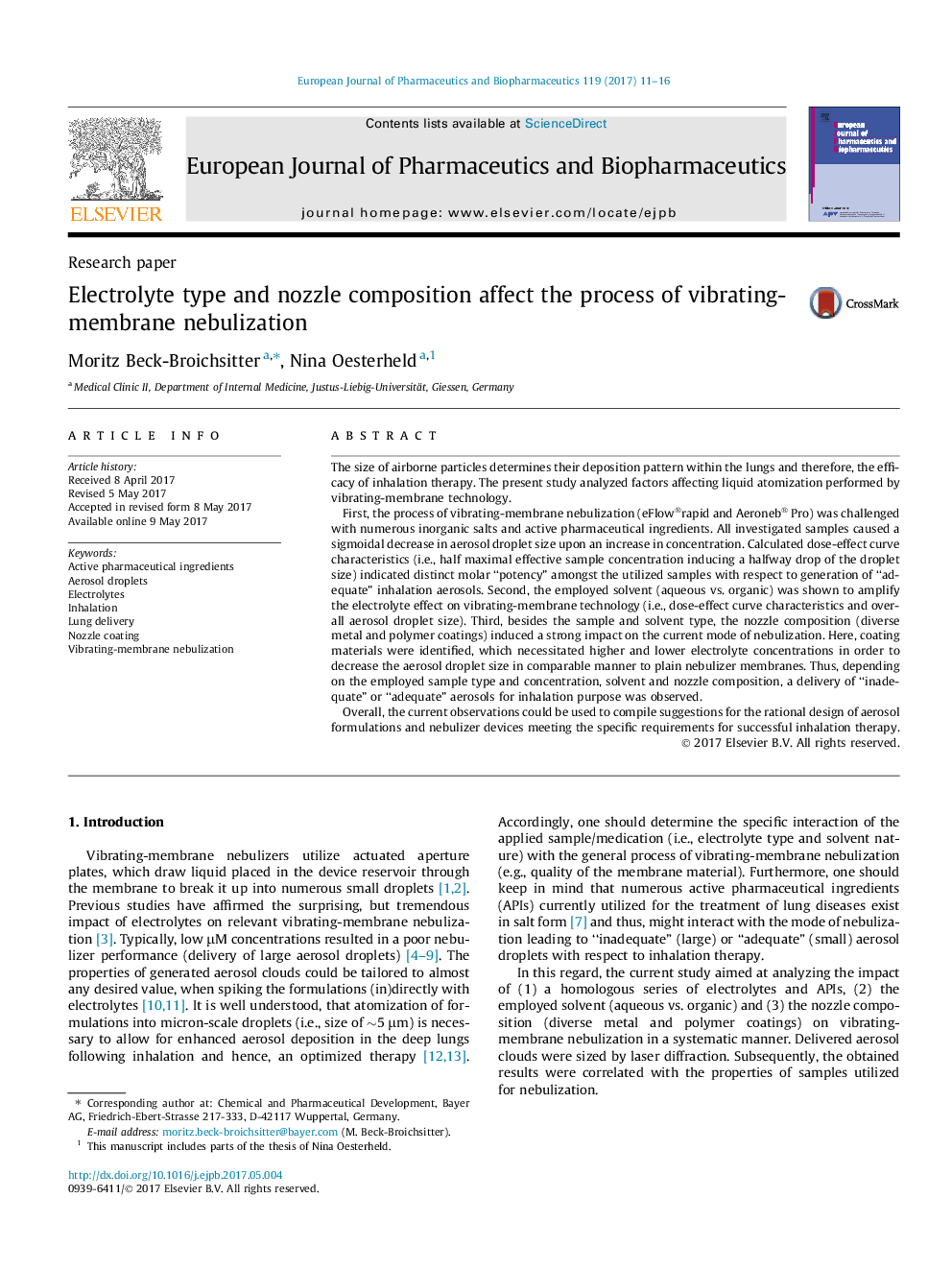| کد مقاله | کد نشریه | سال انتشار | مقاله انگلیسی | نسخه تمام متن |
|---|---|---|---|---|
| 5521357 | 1545304 | 2017 | 6 صفحه PDF | دانلود رایگان |
The size of airborne particles determines their deposition pattern within the lungs and therefore, the efficacy of inhalation therapy. The present study analyzed factors affecting liquid atomization performed by vibrating-membrane technology.First, the process of vibrating-membrane nebulization (eFlow®rapid and Aeroneb® Pro) was challenged with numerous inorganic salts and active pharmaceutical ingredients. All investigated samples caused a sigmoidal decrease in aerosol droplet size upon an increase in concentration. Calculated dose-effect curve characteristics (i.e., half maximal effective sample concentration inducing a halfway drop of the droplet size) indicated distinct molar “potency” amongst the utilized samples with respect to generation of “adequate” inhalation aerosols. Second, the employed solvent (aqueous vs. organic) was shown to amplify the electrolyte effect on vibrating-membrane technology (i.e., dose-effect curve characteristics and overall aerosol droplet size). Third, besides the sample and solvent type, the nozzle composition (diverse metal and polymer coatings) induced a strong impact on the current mode of nebulization. Here, coating materials were identified, which necessitated higher and lower electrolyte concentrations in order to decrease the aerosol droplet size in comparable manner to plain nebulizer membranes. Thus, depending on the employed sample type and concentration, solvent and nozzle composition, a delivery of “inadequate” or “adequate” aerosols for inhalation purpose was observed.Overall, the current observations could be used to compile suggestions for the rational design of aerosol formulations and nebulizer devices meeting the specific requirements for successful inhalation therapy.
73
Journal: European Journal of Pharmaceutics and Biopharmaceutics - Volume 119, October 2017, Pages 11-16
